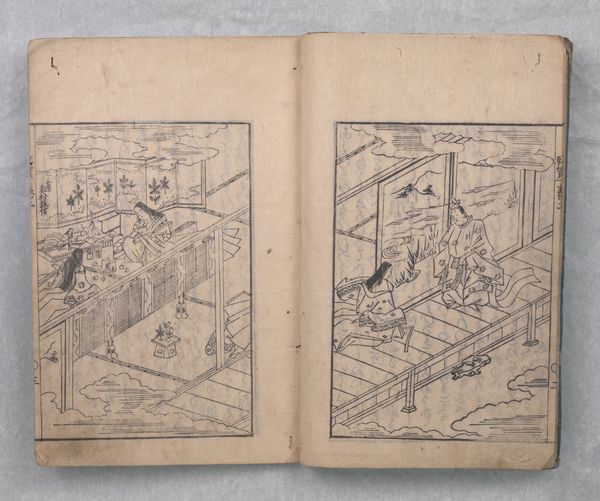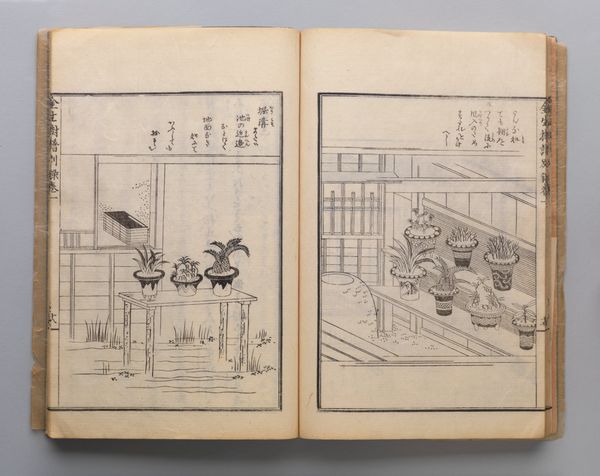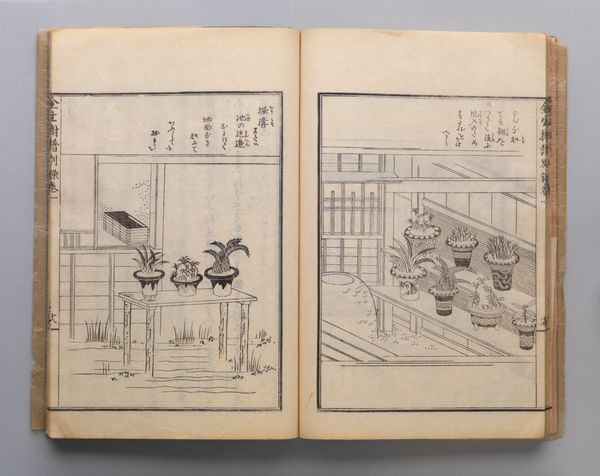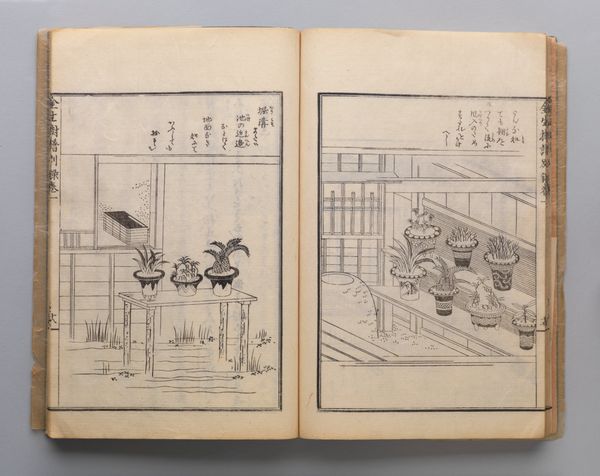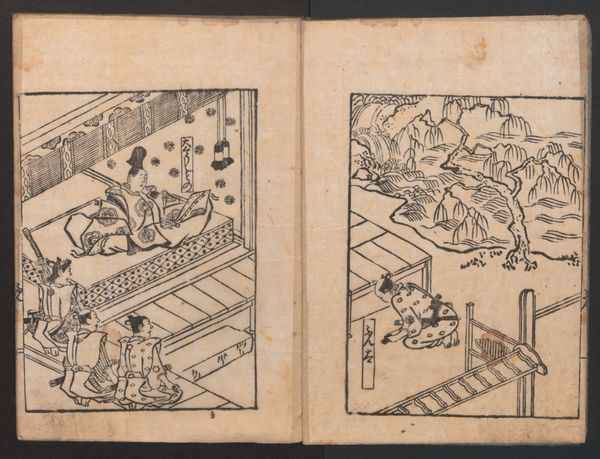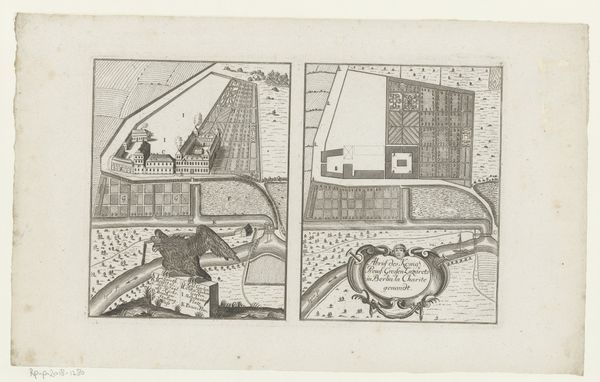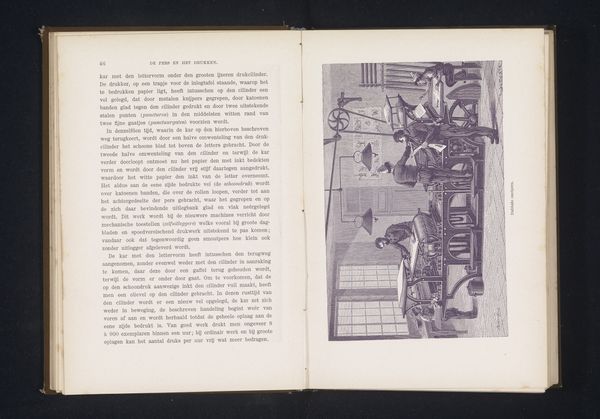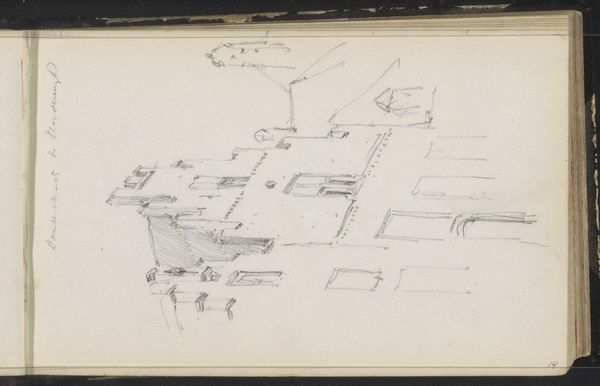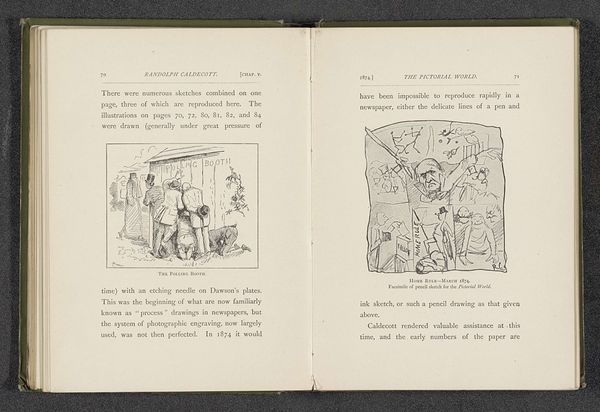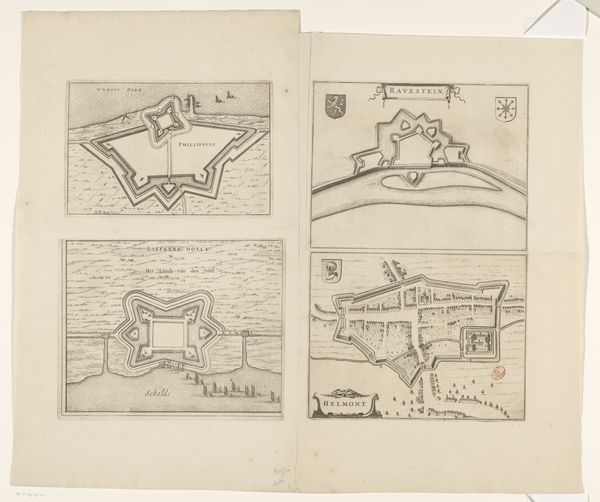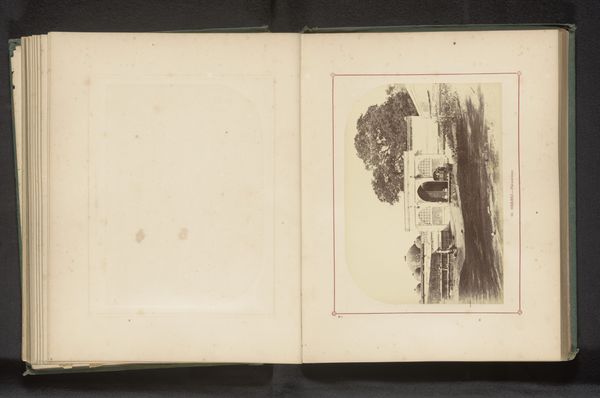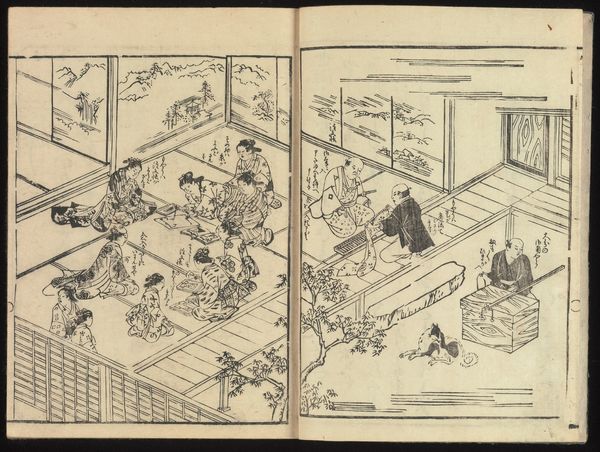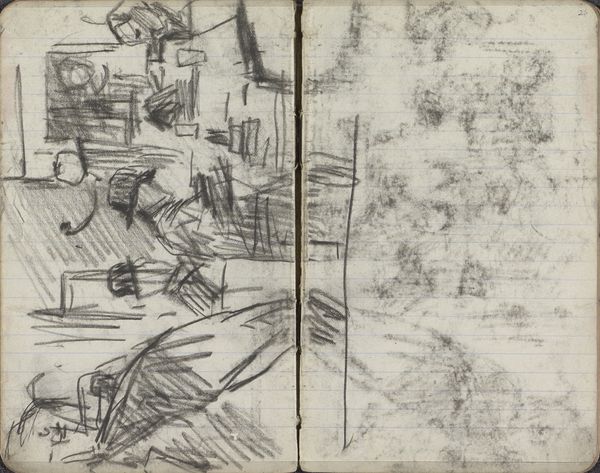
drawing, print, paper, ink-on-paper, ink, woodcut
#
drawing
#
narrative-art
# print
#
asian-art
#
ukiyo-e
#
paper
#
ink-on-paper
#
ink
#
coloured pencil
#
woodcut
#
watercolour illustration
Dimensions: 10 7/16 × 7 1/8 × 1/4 in. (26.51 × 18.1 × 0.64 cm)
Copyright: Public Domain
Curator: The item we're looking at is called *Red and White Tale of Genji*, made in 1709 by Okumura Masanobu. It seems to be an ink on paper drawing and woodcut print in the Ukiyo-e style. The composition looks very symmetrical. What's your initial read? Editor: I'm struck by how much detail Masanobu achieves using what appears to be simple line work. The depiction of interior spaces feels quite intricate despite the limited color palette. How did the materials and the printing process impact the accessibility and consumption of art like this during the Edo period? Curator: That's a perceptive observation! This isn't simply about aesthetic representation, it's about the social life of art itself. The shift from hand-painted scrolls to woodblock prints radically changed artistic production. It made images far more accessible, transitioning art from elite patronage to a wider merchant class audience. Notice the use of woodcut - a reproductive technology. How might this commodification change our understanding of authorship and value? Editor: I suppose it makes me think about mass production versus unique art objects. I had assumed that artwork like this would have been seen as somewhat disposable due to its medium, but clearly the degree of artistry elevated its status. Would I be right in assuming that the artist and workshop involved sought to create both quantity and quality? Curator: Precisely! These prints were not mere commodities; they were carefully crafted objects designed for a growing urban consumer base. The choice of subject matter – referencing the Tale of Genji – suggests a desire to appeal to sophisticated tastes while utilizing relatively inexpensive materials. The labor involved in both carving the woodblocks and printing the image points to the interconnectedness of art, craft, and commerce in Edo society. What do you make of the placement within a bound book and not a singular art work? Editor: Interesting point! The work's integration within a book shifts it from a standalone decorative object to a narrative element. It becomes part of a larger story consumed in a more intimate and perhaps domestic setting. Considering its status as an artwork found between other printed pages helps in understanding the piece. Thanks. Curator: Exactly. This exploration really underlines how production affects reception.
Comments
minneapolisinstituteofart almost 2 years ago
⋮
By the early 1700s, when this printed version of The Tale of Genji was published, very few people could understand the complex written language in which the original tale had been written 700 years earlier. For this illustrated and modernized version of the tale, Okumura Masanobu wrote in a manner that reflected Japanese as it was spoken in the early 1700s. The text was rendered freely, placing emphasis on conveying the meaning rather than offering a verbatim presentation of the original tale.
Join the conversation
Join millions of artists and users on Artera today and experience the ultimate creative platform.
